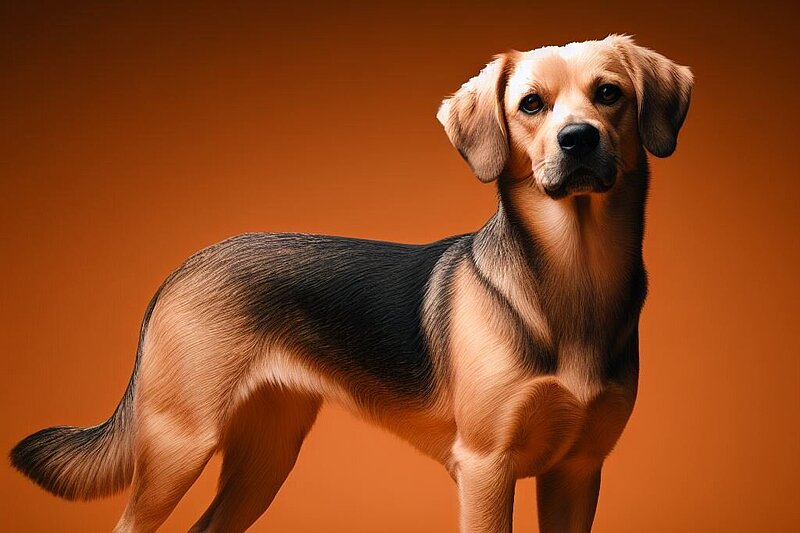The Dunker: A Norwegian jewel among the dog breeds
History of the Dunker dog breed
The history of the Dunker begins in Norway in the 19th century. Wilhelm Dunker wanted to breed a dog breed that was particularly well suited to hunting hare in the harsh Scandinavian landscapes. He crossed various native hunting dogs with the Russian Harlequin dog to achieve the ideal combination of endurance, hunting instinct and robustness. The breed was officially recognized in 1902 and has since found a loyal following among hunters and dog lovers.
Who is the Dunker suitable for?
The Dunker is an ideal companion for active people and families who spend a lot of time outdoors. Thanks to its energy and hunting instinct, it is particularly suitable for people who enjoy hiking, jogging or other outdoor activities. Families with children will find Dunker a patient and loving playmate. Even though he can generally adapt to life in the city, he feels most at home in rural areas or houses with large gardens.
Character of the Dunker
Dunkers are known for their friendly, even-tempered and patient nature. They are very affectionate and love to spend time with their family. These dogs are intelligent and eager to learn, which makes training easier. However, thanks to their strong hunting instinct, they are also very independent and require consistent training.
Appearance of the Dunker
The Dunker is a medium-sized dog with a harmonious build. Males reach a shoulder height of around 50 to 55 cm and females are slightly smaller at 47 to 52 cm. The weight is usually between 16 and 22 kg. Characteristic is their short, dense coat, which comes in different colors, whereby the harlequin effect - a mixture of black, grey and white - is particularly striking. The ears are of medium length and drooping, the eyes are dark and expressive.
Grooming the Dunkers
Grooming a Dunkers is relatively uncomplicated. Their short coat needs to be brushed regularly to remove loose hair and keep the skin healthy. Due to their active nature and preference for being outdoors, it is important to regularly check and clean their ears, paws and teeth. A weekly check is usually enough to detect health problems early on.
Health of the Dunkers
Dunkers are generally healthy dogs, but as with many breeds, they can suffer from genetic diseases. The most common health problems include hip dysplasia and ear infections. Regular veterinary check-ups and a balanced diet will help to keep your Dunkers healthy.
Exercise and exercise
The Dunker is a very active dog that needs plenty of exercise and mental stimulation. Daily walks, long hikes and outdoor games are a must. A garden where the dog can run around freely is ideal. However, due to its hunting instinct, it should always be kept on a lead in unsafe areas.
Training recommendations
Training a Dunkers should start early and be carried out consistently. Puppy school and obedience training are essential to ensure that the dog is well socialized and obedient. Due to its intelligence and eagerness to learn, the Dunker is also ideal for dog sports such as agility and tracking.
Behavioral characteristics and interactions
Dunkers are social and friendly dogs that get along well with children and other animals. They are patient and can cope well with the sometimes tempestuous behavior of children. Their friendly nature also makes them good playmates for other dogs. However, their hunting instinct should be taken into account if small animals live in the household.
Recognition by the FCI
The Dunker is recognized by the Fédération Cynologique Internationale (FCI) and classified in Group 6 (Running Dogs, Welding Dogs and Related Breeds), Section 1.2 (Medium-sized Running Dogs).
